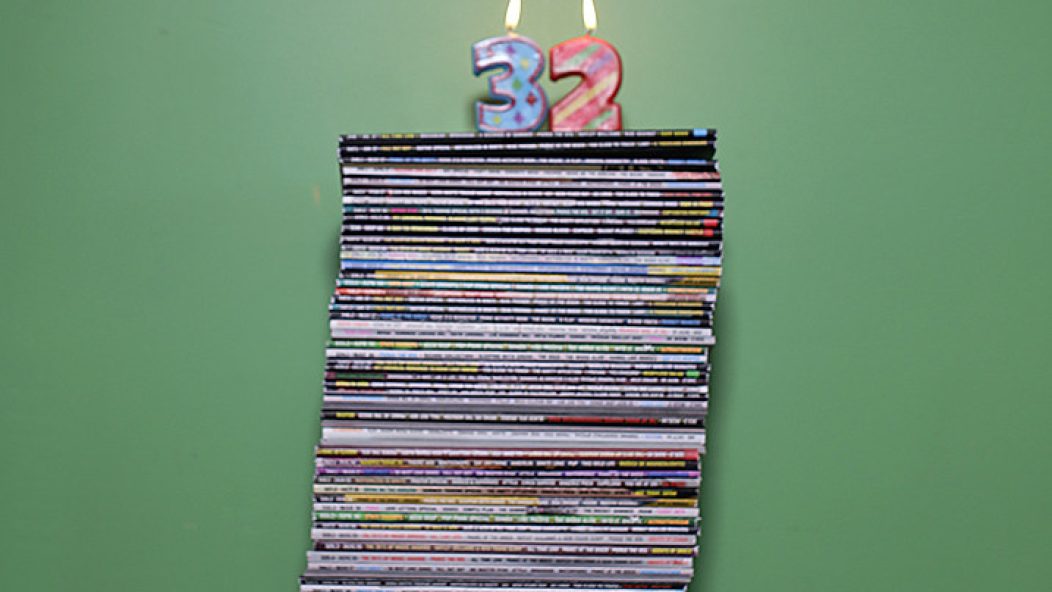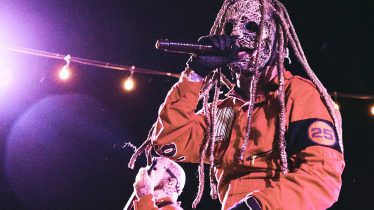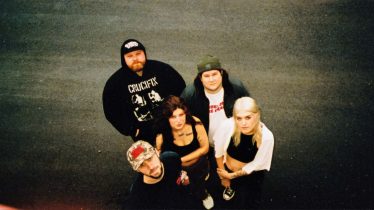
20 things you didn’t know about Alternative Press
It was 32 years ago today that Mike Shea laid out the first issue of Alternative Press on his parents’ kitchen table in Aurora, Ohio. Fueled by the rage that the Smiths were not playing Cleveland, he vowed he would start his own music magazine that covered the music he liked and not the stuff that accountants and consultants were programming on radio and MTV. The pages of AP reflected the listening habits of miscreants of all stripes, from angry hardcore dudes to sullen goths, Anglophiles with symmetrical haircuts, hair follicle-challenged metalheads and all the tribes in between.
Despite our best efforts, a lot of people out there still think that we’ve only been at this for five years, maybe 10. That’s okay, because when Nirvana was on our cover, we were trolled by dullards who sneeringly asked if we “prayed to God for giving you Kurt Cobain so you could have jobs.” (Bitch, please: We’d already been doing this for six years before the Seattle legends graced our cover for the first time in 1992.)
So come one, come all to this magic affair: Here are some brief points of history about AP, from the way we survived to the stories behind (under?) the covers. It’s been a crazy wild ride, and we’d like to thank you, your older siblings, possibly your parents, for all the love, support, hate and interest. When the time comes for magazines to be reduced to microchips that get updated via data streaming through a jack in your head, we promise you we’ll be on the rack.
THE LOGO
[Our original scrapped logo and our very first logo.]
The very first prototype of our logo was actually an outline of the soon-to-be Cleveland city skyline. In 1985, they were building the BP Building, the city’s newest skyscraper. Our original logo read ALTERNATIVE PRESS and had the outline of the Cleveland skyline. But Shea thought the logo looked too much like a suburban real estate trademark, so it got scrapped. He instructed art school student Marty Ackley to make something “more punk rock” and he came up with the original AltPress logo, which you can see above.
IT WASN’T REALLY A MAGAZINE FOR A WHILE

[Our first issue.]
The first issue of AP that Shea glued together like a high school newspaper (replete with business card-sized ads from local florists) started out as a four-page fanzine. The legendary front page editorial about the Smiths not playing Cleveland, and coverage of a protest for “No Business As Usual Day,” gave you an idea of both Shea’s mindset and the cultural zeitgeist at the time. “In the end, all we can hope for is that we will succeed in adding to the support the local scene needs and DESERVES,” Shea wrote in his first issue. “We may last a few months or we may last five years, we don’t know. Yet, we won’t give up. Alternative Press hopes to become the voice of the local alternative music scene in newsprint. In upcoming months we hope to expand the size of our paper, adding more pages, more stories and more photographs. We hope to expand our circulation and cover the entire North-Eastern Ohio area. We’re going to try our best and even if we fail, we still have something to show for it. At least we TRIED.” The mag went through several formats before arriving at a standard magazine size around AP 15, starring LA art-metal mavericks Jane’s Addiction.
WAY BEFORE THE AP TOUR—AND THE AWARD SHOWS…

[Above is a ticket from an Alternative Productions show featuring Suicidal Tendencies as the headliner.]
To pay the print bill, Shea started booking punk-rock shows at the Variety, a dilapidated vaudeville theater on Cleveland’s West Side. Long before the Alternative Press Music Awards and the AP Tour, the magazine promoted gigs under the moniker Alternative Productions that featured headliners such as DRI, the Meatmen, Circle Jerks and Suicidal Tendencies and more than a few local bands. Drawing in about 1,000 to 2,000 local fans per show, the magazine was able to receive the funding it needed. That is, until the established local promoters were incredulous that some kid from the ’burbs was making money on shows and they started outbidding Shea for bands.
WE USED TO BE SQUATTERS
Instead of having office space, the early years of AP were run out of the East Side apartment of then-editor in chief Dave Earle. In return, AP covered half of his rent. Staff meetings of editors, writers and people sympathetic to the cause were held at an Arabica coffee shop in Cleveland’s Coventry neighborhood. Where the Arabica once stood is now the site of the Grog Shop, one of the city’s finest rock clubs. (Next time you’re there, say hi to Kathy and look for the plaque at the front door.)
WE’VE BEEN LYING ABOUT OUR AGE
Despite getting some marginal interest from cool indie retailers and other scene hangouts, Shea completely ran out of cash and by 1987, for all intents and purposes, AP was dead. A planned cover starring cool AF industrial act Einstürzende Neubauten never materialized. It wasn’t until former contributor Carl Bujorian (who had a sweet gig at the time) gave Shea a wad of cash to put out a proper farewell issue. (AP 8, featuring cover stars Love & Rockets). The response was big enough to make Shea quit his department store job (Higbee’s, the store featured in the legendary holiday film A Christmas Story) and give publishing another try.
HOW TO MAKE EMPLOYEES AND IRRITATE PEOPLE

[Above are the review that led to Jason Pettigrew's hire and a photo of Pettigrew and Shea at a staff Christmas party.]
On one of his many trips to Cleveland to see bands that didn’t get booked in his Western Pennsylvania locale, Jason Pettigrew chanced upon a stack of issues (AP 4) in front of the now-defunct Peabody’s Down Under. He was impressed by the scope of what the mag covered, but took umbrage over a negative review Shea had written about Bauhaus frontman Peter Murphy covering legendary Cle art-punks Pere Ubu. Shea was silly enough to leave his phone number in the masthead. The arrogant Pettigrew showed respect but questioned Shea’s mental acuity regarding the review. Shea asked, somewhat irked, “Do you think you can do better?” Pettigrew’s been with the company ever since. (DISCLAIMER: Do not use this method to find a job in 2017.)
THE TIME WE REACHED NIRVANA

While AP dedicated covers to a fine selection of “college rock” acts for most of the ’80s (ask your parents about Jane’s Addiction, Ministry, the Cure, Violent Femmes, Pixies, Cocteau Twins, Robyn Hitchcock, even Guns ’N’ Roses, to name a scant few), we beat everyone to the stands with our Nirvana cover (AP 44). Music industry players were taking note of the mag’s accomplishments. It sounds quaint and awesome now, but back then we were hustling so hard, we didn’t really understand the gravity of being on the zeitgeist at the time.
THE TIME SMASHING PUMPKINS SMASHED BACK
Correspondent Eric Gladstone changed the course of Smashing Pumpkins' career with an epic 8,000-word story that revealed who did what—or didn't—in the band. He drove 10 hours from Washington, DC to Cleveland to finish the piece in the AP offices because of a tight deadline. After the piece had streeted, Gladstone was set upon by bassist D’Arcy Wretzky during a soundcheck at a DC gig for his supposed transgressions, allegedly becoming banned from Pumpkins gigs for life. Band leader Billy Corgan explained it in great detail in our 20th anniversary issue (AP 204), but you already have that.
NO SENSE PLEASE, WE’RE BRITISH.
As their success was ascending, British-born correspondent Dave Thompson returned to the U.K. to interview ’90s Britpop sensations Blur for an extensive feature. Sitting with the band in the London office of their record label, Thommo was subjected to abuse from bassist Alex James, who berated Thommo for being an American, thereby completely unable to understand the band's humor and mission. After practically berating him for several minutes, frontman/cooler head Damon Albarn turned to him and said, “Alex, listen to his accent. He's English.” The bassist’s response: “Oh. Then how come the magazine's in the U.S.?”
WE THOUGHT WE WERE COOLER THAN NIRVANA—FOR A MINUTE

We were offered the first cover centered around In Utero, Nirvana’s follow-up to the game-changing Nevermind album. And the staff were split down the middle as to whether we should do it. Cooler heads prevailed (more like Shea saying “Make it happen.”) and Seattle-based Dave Thompson was dispatched. When the band arrived at a Seattle restaurant for the interview, they ordered their meals and suddenly Kurt Cobain leaped up and said he'd be back in a few minutes. He returned two hours later to say he had to visit his chiropractor.








